Fruit salads are easy prey for monotony. If you make fruit salads often, how often do you switch out the ingredients? So many of us get into a routine of what fruit salad should look like – pineapple, melon, strawberries. It’s just like a regular green salad, which for so many includes lettuce and a small selection of regularly used ingredients. We do ourselves a disservice in these areas because salads have an infinite number of variations with an enormous number of different ingredients that can be used. If you have trouble thinking of fruit salad variations, just look to the season and pick the fruit that is at its best right now.
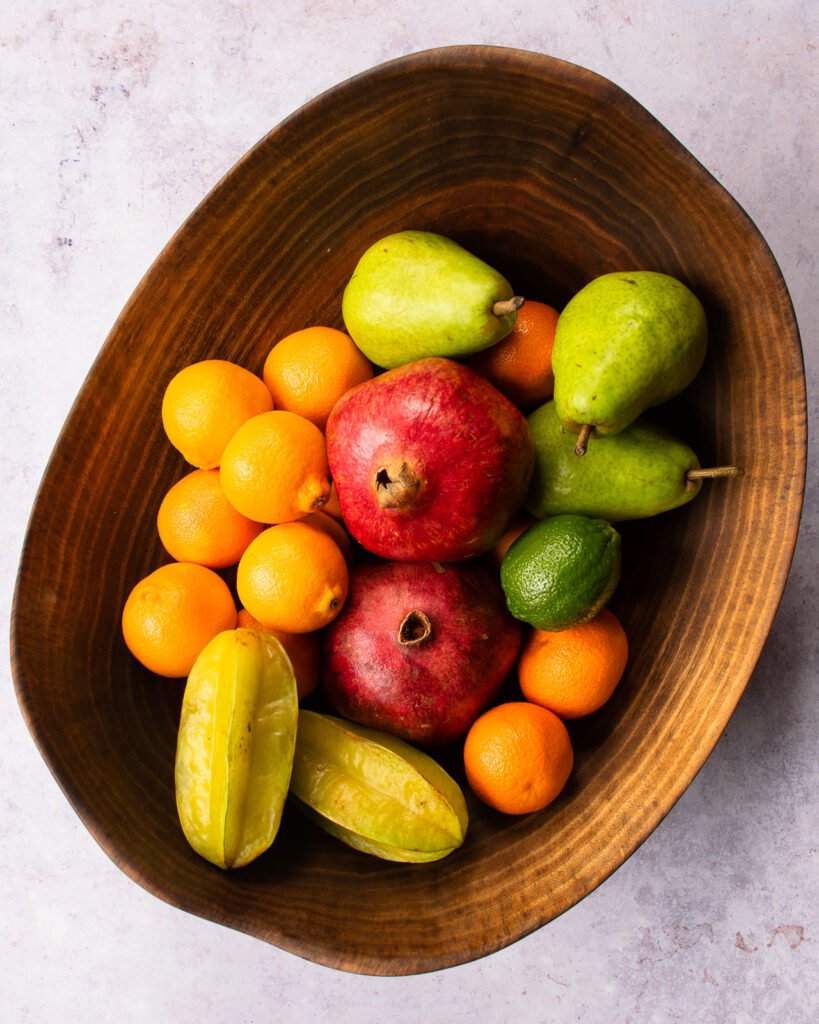
For winter fruit salads, mandarins, pears and pomegranates are very common in North America and abundantly available in winter. Pomegranates are in season from September through November, but they keep very well and you’ll find them readily available all the way through January in many grocery stores. (learn more about how to cut a pomegranate here.) Mandarins and Clementines have almost become synonymous with the holidays and are around from early winter to early spring. Pears are another winter fruit with many varieties that can be found all winter long. When buying, look for a pear that is just slightly pliable around the base of the stem, or make sure you buy the pears a few days ahead of time so that they can ripen in your fruit bowl.
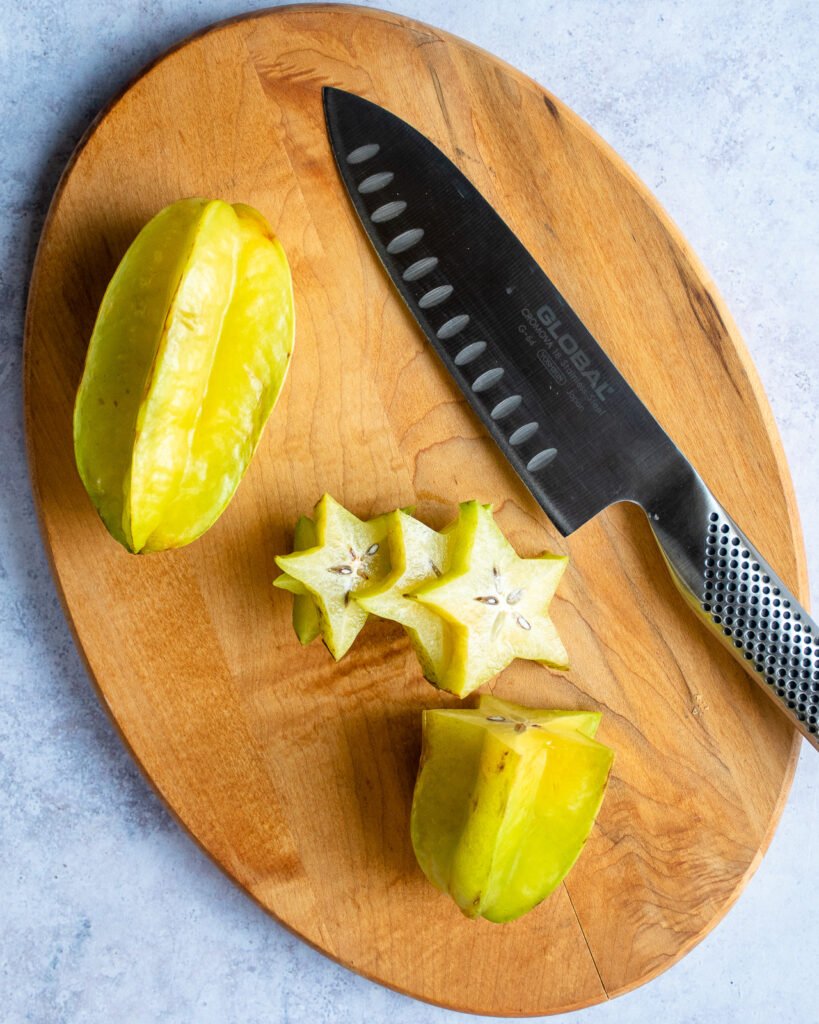
You might not be as familiar with starfruit and lychees. Starfruit is also known as carambola and is a fruit native to Asia. It usually has five ridges and when you slice a carambola, you’ll immediately see why it’s other name is “starfruit”. Because of this unique and beautiful shape, it’s really a perfect addition to a winter fruit salad, adding just the right amount of sparkle. The entire fruit is edible, including the slightly waxy skin, and it has a texture similar to grapes, with no fibers to bite through. I have a friend who thinks that starfruit tastes “like roses smell”. You might need a little extra imagination to agree with that, but I can tell you that the fruit is mildly sweet and the flesh is crisp and juicy. When you’re choosing your starfruit, look for yellow fruit that has slightly brown ridges. If the fruit is still pale green, it will continue to ripen and turn yellow in your fruit bowl.
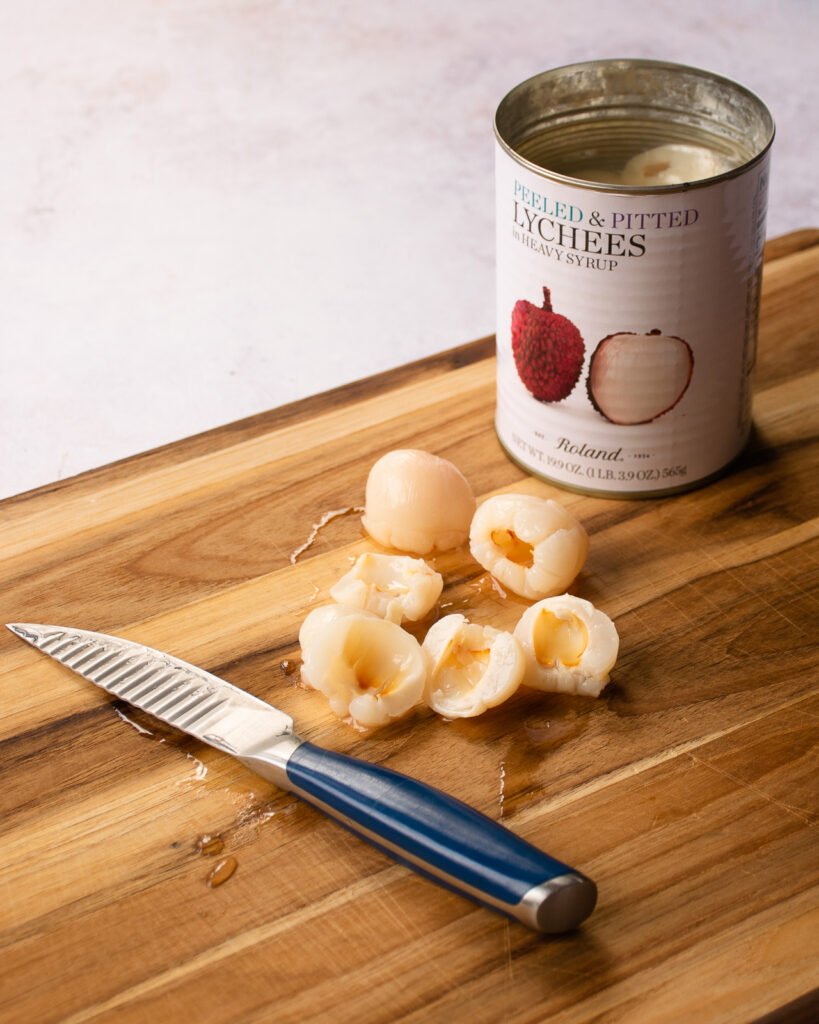
Lychees are the only fruit in this salad that are not winter fruit (their season is summer through the end of September), but since we usually buy lychees canned, I’m making an exception. Lychees, which originated in China, are quite beautiful in their raw and ripened state. They have a thin, rough, red pebbled skin that is inedible, but when peeled away, the skin reveals a soft fleshy fruit with a black seed. You won’t see any of this with canned lychees, but slice the flesh in half and pop it into this salad for a burst of sweetness in each bite. The sweet lychee syrup in the can is used to make the dressing for this salad, along with some honey, cinnamon and lime juice.
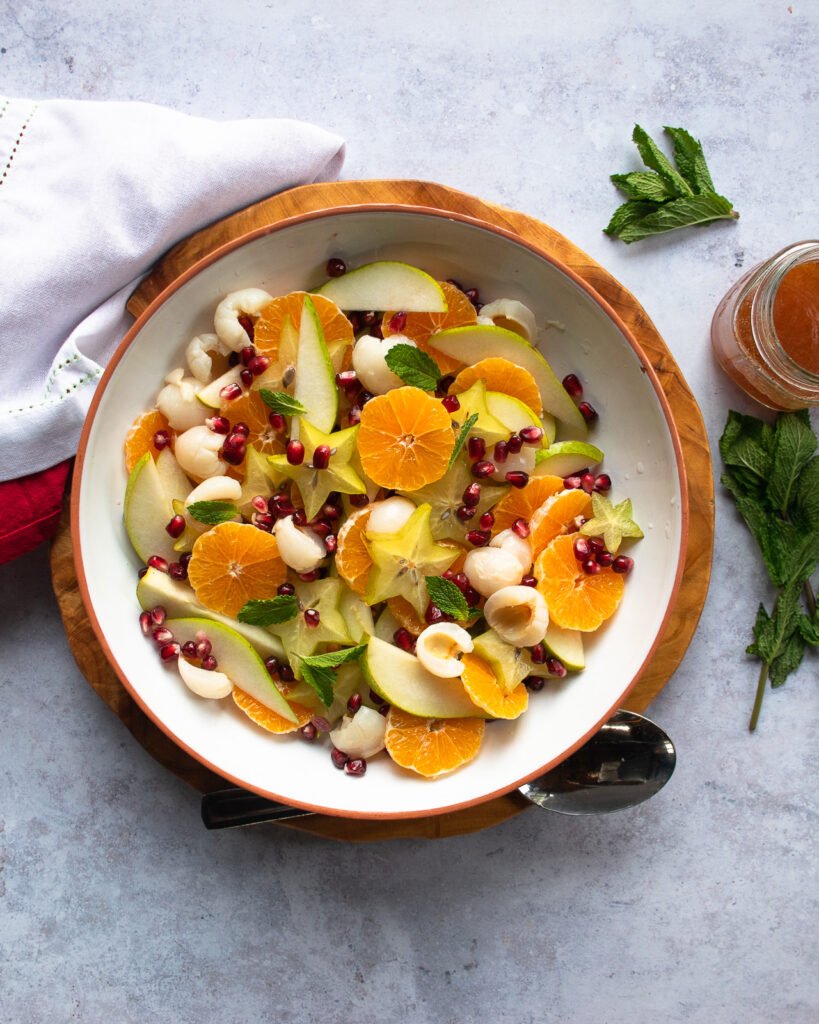
What makes this salad so visually appealing is all the different shapes of the fruit. Leave the pears in long slices, slice the mandarins into circles, let the starfruit take it’s unique star shape and then scatter the dots of pomegranate seeds and lychees on top. This is a salad that lends itself to being plated and arranged, rather than tossed. Drizzle the dressing on, let it sit for a few minutes. Then garnish with small leaves of mint for the perfect burst of winter freshness.
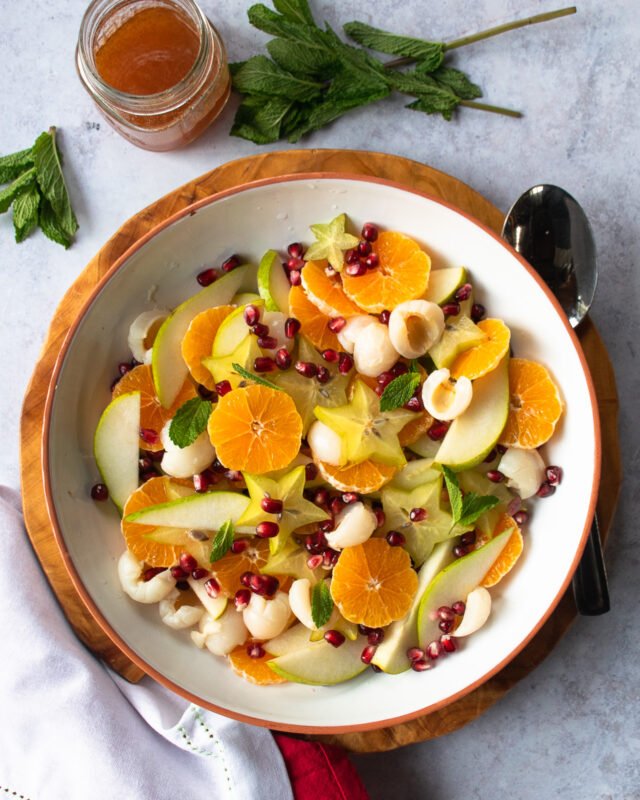
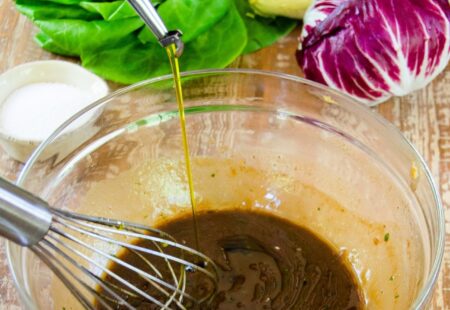
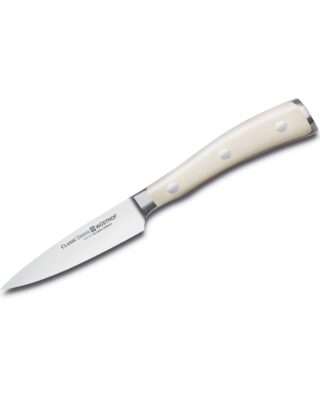

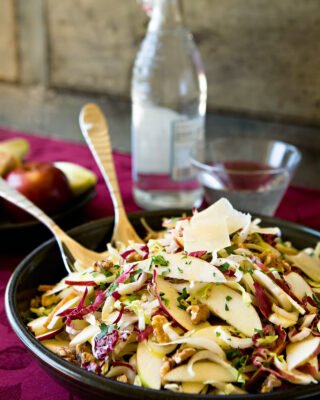
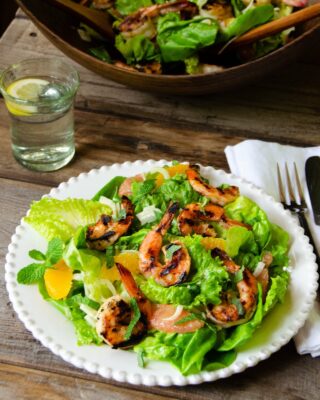
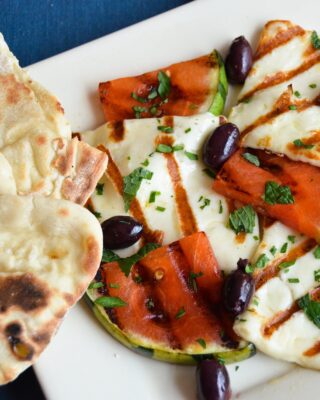
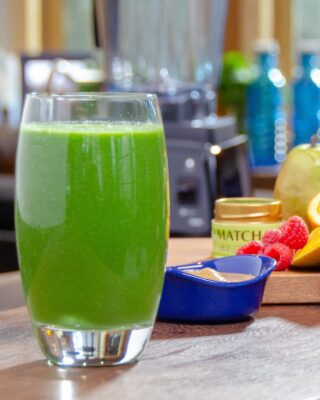
Why do I reserve 1 cup of the lychee syrup but only use 2 tablespoons in the dressing? What do I do with the rest of the syrup?
Hi Patti. You don’t have to reserve a cup of the syrup, but you certainly can. You do only need 2 tablespoon of the syrup for the dressing, but you could use it as a simple syrup for cocktails or to douse over cakes and sponges – anywhere simple syrup is used. Or, you can discard it. I mention reserving the syrup only because otherwise people might drain the can of lychees and have nothing left for the dressing.
I was looking for the diagram on salads. It looked like a mind map but couldn’t seem to find it on your website
Hi there. You’ll find that diagram in the cooking school article on Salads 101, here: https://bluejeanchef.com/cooking-school/salads-101/
ML
Hi! What can I substitute for lychees? Thanks
You can add halved red or green grapes instead of the lychees.